A nonstick pan is one of the most important utensils in any kitchen—whether you’re flipping pancakes, searing fish, or making omelets. However, with so many options on the market, it can be difficult to find the perfect nonstick pan. This guide explains everything from materials and coatings to handle comfort and maintenance, so you can make the best choice for your cooking style.
Why a Good Nonstick Pan Matters
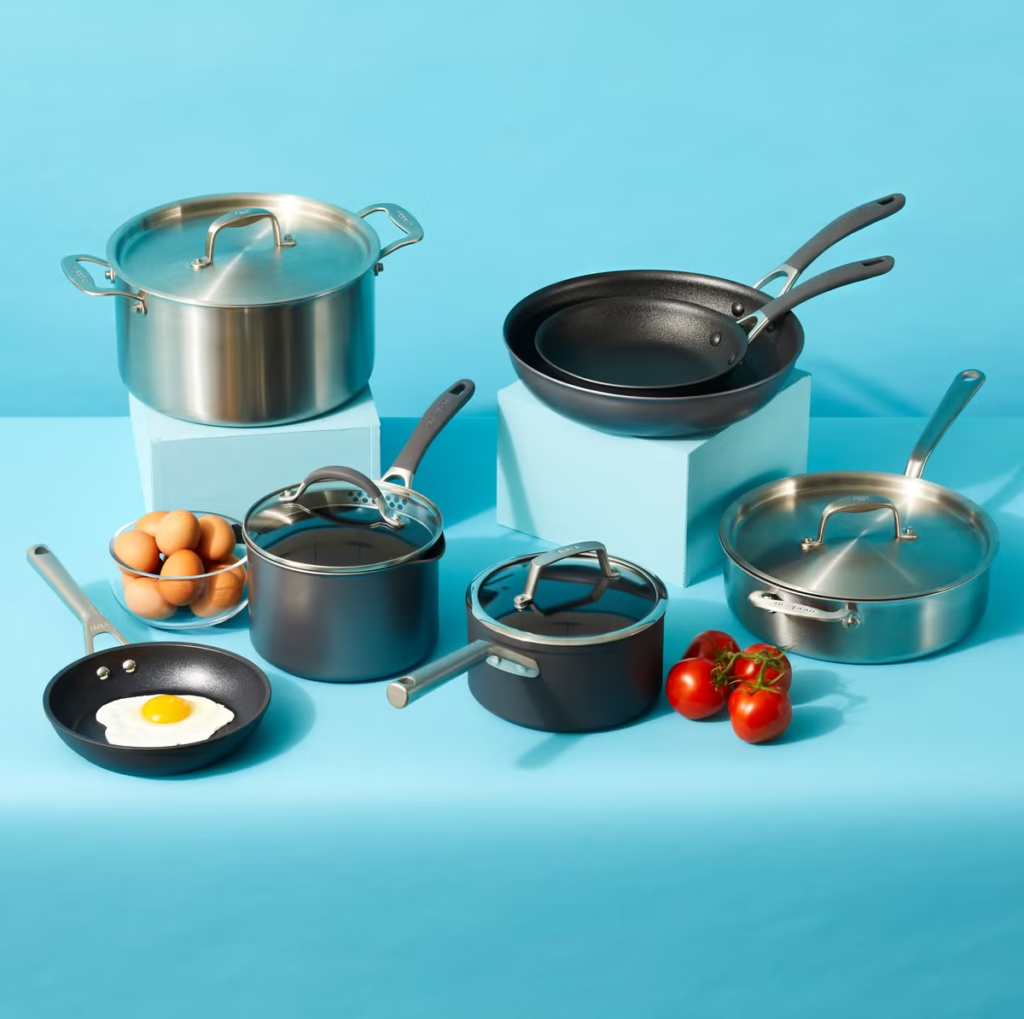
1.Efficient cooking
High-quality cookware with a non-stick coating heats evenly, reduces the need for excess oil, and is quick to clean.
2.Versatility
From delicate eggs to sticky sauces, a perfect nonstick pan is suitable for almost all foods without them sticking to the surface.
3.Durability
If you choose the right nonstick pan, you won’t have to replace it every few months, saving money and reducing waste.
Understanding Nonstick Coatings
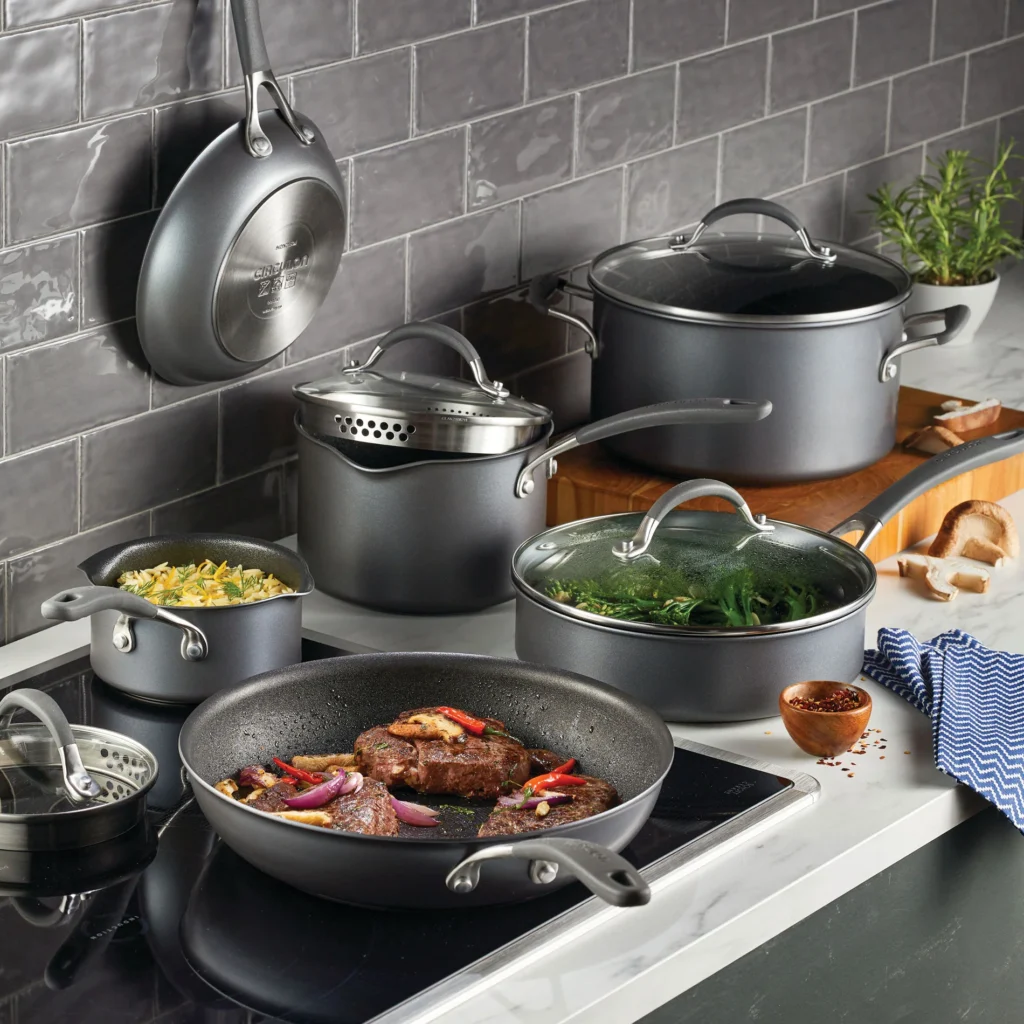
The coating is the heart of your pan’s performance. Here are the common types:
PTFE coating (Teflon)
- Smooth surface, excellent nonstick properties
- Suitable for low to medium heat
- Avoid overheating to prevent damage
Ceramic nonstick coating
- Naturally free of PTFE and PFOA
- Withstands higher temperatures
- May wear out faster without careful cleaning
Hard anodized nonstick coating
- The surface is treated to be harder and more durable.
- Often scratch-resistant and ideal for everyday use
Best Materials for Nonstick Pan Construction
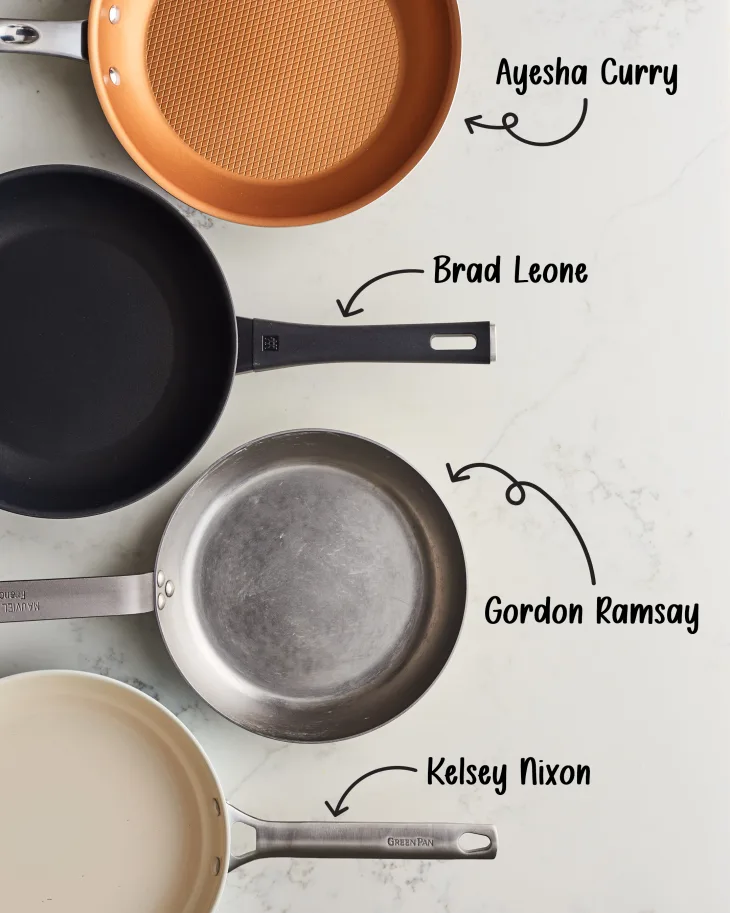
Aluminum
- Lightweight and heats up quickly.
- Often combined with a nonstick coating to ensure even cooking.
Stainless steel with nonstick coating on the inside
- Durable exterior, elegant appearance.
- Slightly heavier, retains heat well.
Cast aluminum
- Excellent heat retention.
- Well suited for ovenproof nonstick pans.
Pan Size and Shape Considerations
Choosing the right size nonstick pan depends on your cooking habits:
- 20 cm pan – Ideal for single servings or frying an egg.
- 25 cm pan – Versatile size for small families.
- 30 cm pan – Ideal for larger meals or stir-fries.
The shape also plays a role:
- Flat, low sides – Makes it easier to turn food.
- Deep-sided pans – Perfect for searing and braising.
Handle Design & Comfort
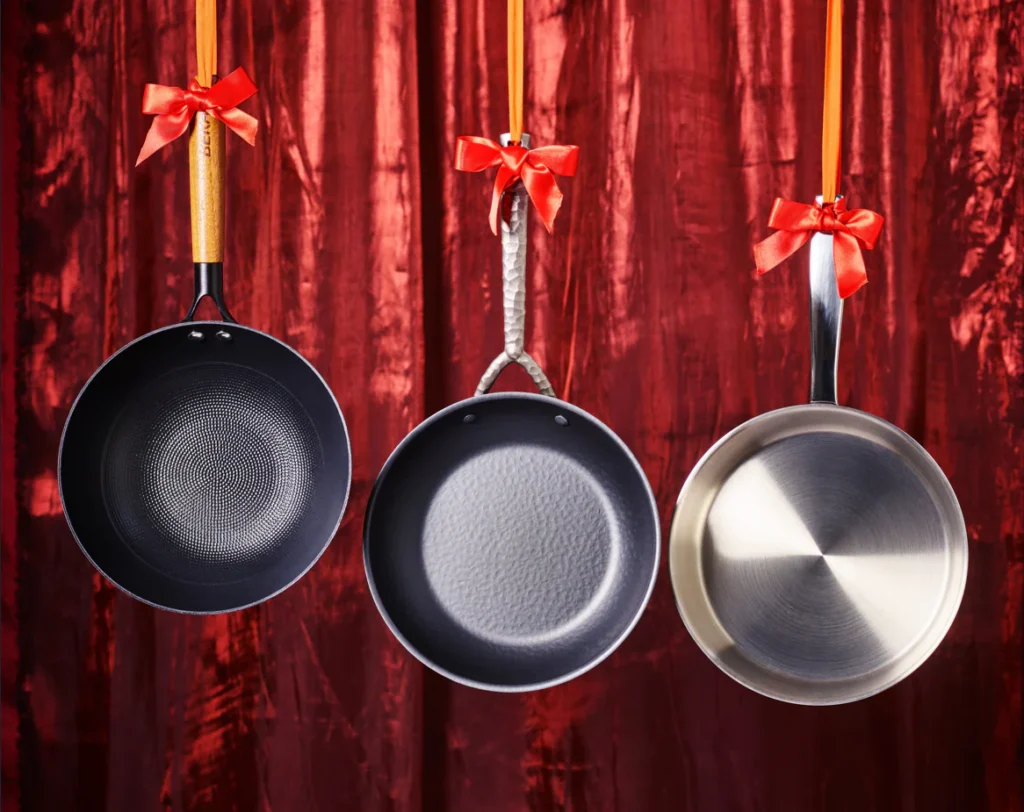
An often overlooked feature of the perfect nonstick pan is the handle:
- Ergonomic handle for safety and comfort
- Heat-resistant material such as silicone or stainless steel
- Riveted handles for durability
If you want to use your pan in the oven, check the temperature resistance of the handle.
Dishwasher vs. Hand Washing
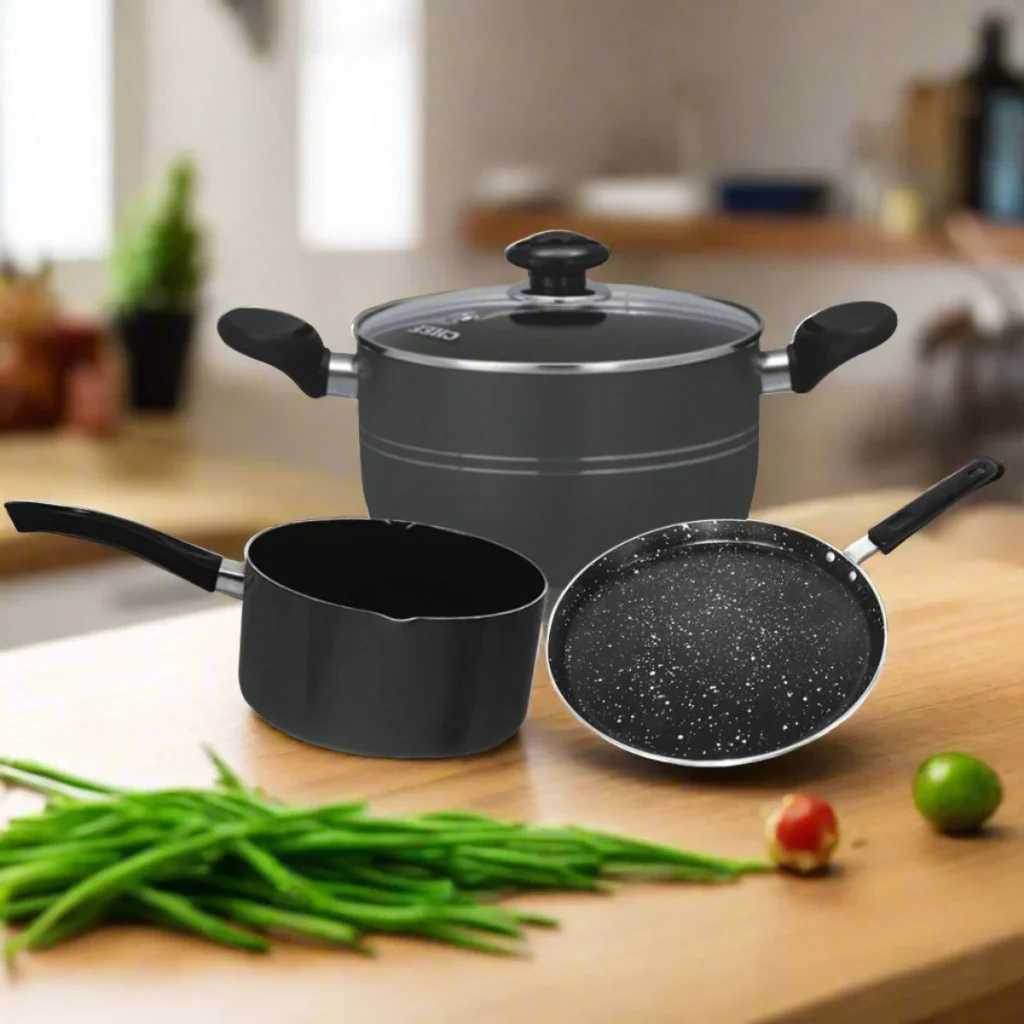
Although many nonstick pans are labeled as dishwasher safe, washing them by hand with mild detergent will help preserve the coating for longer. Avoid steel wool or abrasive scouring pads, which can scratch the surface.
Ovenproof
Some recipes require the dish to be transferred from the stove to the oven. Pay attention to the following:
- Ovenproof temperature specifications (often 350°F to 480°F)
- Full metal handles without plastic parts
- Coating stability at high temperatures
How to Care for Your Nonstick Pan
Proper care will extend the life of your pan:
- Preheat carefully – Avoid placing the pan on high heat immediately.
- Use silicone, wooden, or plastic kitchen utensils – This will prevent scratches.
- Allow to cool before washing – Sudden temperature changes can damage the coating.
- Store carefully – Do not stack heavy cookware directly on the surface.
Common Mistakes When Using Nonstick Pans
- Overheating – Weakens the nonstick coating.
- Cooking sprays – Can leave behind residue that is difficult to remove.
- Metal utensils – Cause scratches and flaking.
- Improper use in the dishwasher – High-pressure water and detergents break down the coating more quickly.
Evaluating Price vs. Quality
While inexpensive pans are sufficient for occasional cooking, frequent use requires a mid- to high-priced pan with better build quality. Look for:
- Well-known brands with good warranty coverage
- Numerous customer reviews on durability
- Scratch-resistant coatings
Eco-Friendly & Health-Safe Options
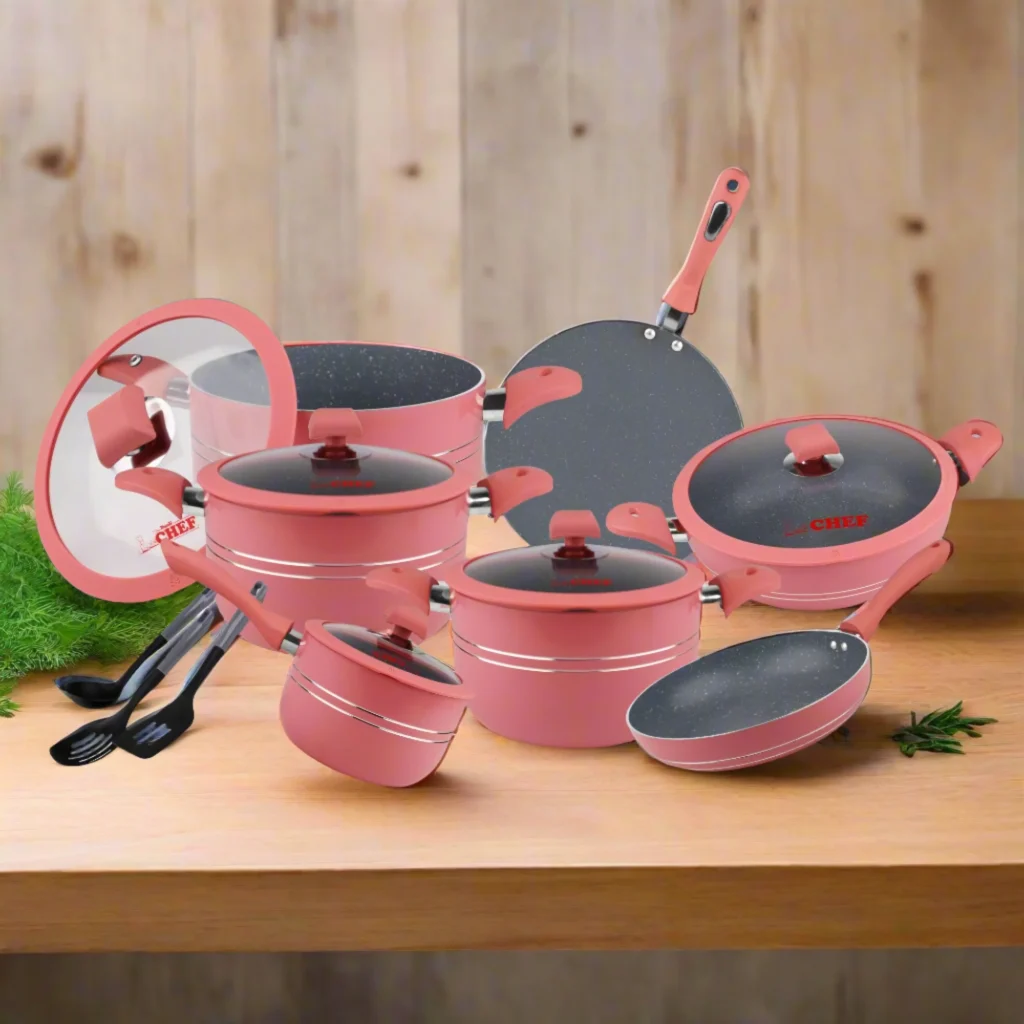
Sustainability also plays a role. Consider the following:
- PFOA-free coatings for safer cooking
- Recyclable materials such as aluminum or stainless steel
- Brands that value environmentally conscious manufacturing
Conclusion
When choosing the perfect nonstick pan, it’s important to match the coating, material quality, size, and features to your cooking needs. A good nonstick pan is lightweight, heats evenly, is durable, and easy to clean—making weeknight dinners or Sunday brunch a breeze.
Invest in quality now, care for it properly, and you’ll have a reliable pan that will transform simple ingredients into delicious meals for years to come.
